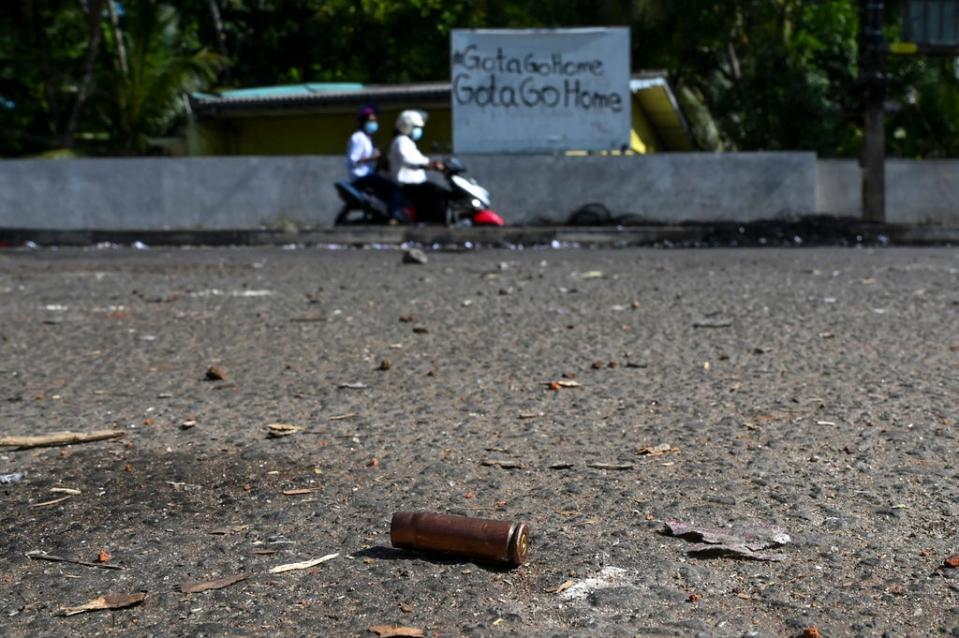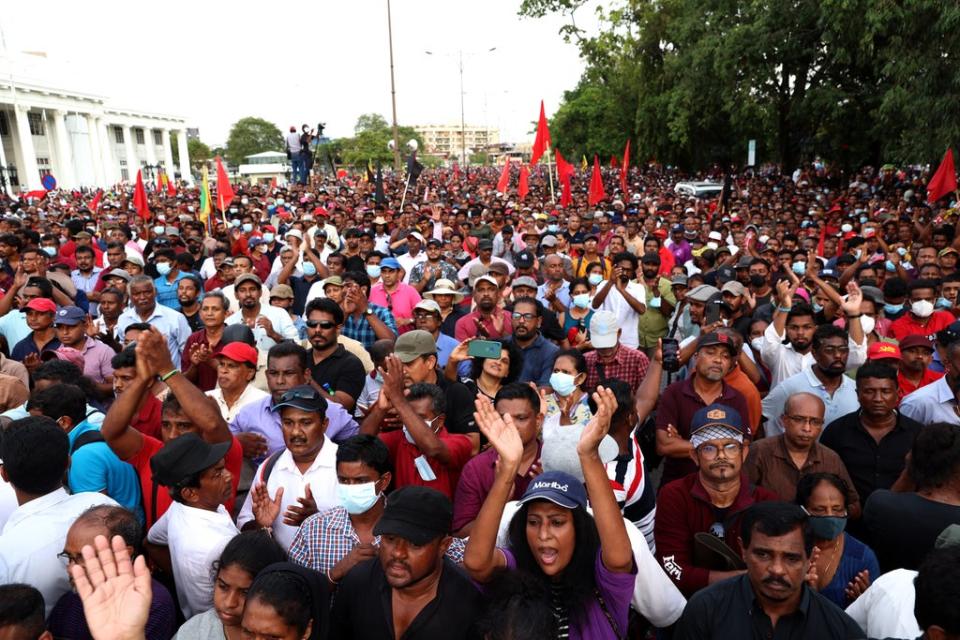Sri Lankan police shoot dead protester amid political and economic turmoil
- Oops!Something went wrong.Please try again later.
- Oops!Something went wrong.Please try again later.
The anti-government protests in Sri Lanka intensified after police on Tuesday opened fire to scatter demonstrators, killing one person and injuring more than 10 others.
Protests have spiralled across the island nation of 22 million people for several weeks as the worst economic crisis since 1948 has forced Sri Lankans to reel under shortage of food, fuel, medicines and long power cuts.
On Tuesday, one demonstrator was shot dead and at least 12 were hospitalised with injuries after clashes broke out between the protesters and police in the central town of Rambukkana, 90km northeast of Colombo. Two of those injured are in a critical condition.
“We are suspecting gunshot injuries but need a post-mortem [examination] to confirm the exact cause of death,” Mihiri Priyangani, director of the Kegalle Teaching Hospital, said.
For nearly a month, Sri Lankans have peacefully occupied the entrance to the president's office, chanting “Go Gota Go” as he refuses to step down from office.
Demonstrators are calling for president Gotabaya Rajapaksa‘s resignation over his government’s handling of the economic crisis led by dried foreign reserves.
The country has sought rapid financial assistance from the International Monetary Fund after announcing a pre-emptive default on all its foreign debt, estimated to be about $51bn, as a “last resort” to avoid a further financial meltdown.
According to police, the agitation turned violent after the protesters were asked to move away from a key railway line that they had blocked for hours.
“To control the situation, police fired at the protesters. Several injured policemen have also been hospitalised,” police spokesperson Nalin Thalduwa said.

Thousands of people descended on the streets and blocked key roads in several parts of Sri Lanka to protest against police brutality. Scores of bank, port, health and other state employees joined the protest in front of the main railway station in Colombo, condemning the shooting.
Armed with posters that read “bring down the cost of living”, “bow down to the peoples’ verdict” and ”Gota go home”, they marched on the main road near the station.
Condemning the shooting, US ambassador Julie Chung and UN resident coordinator Hanaa Singer-Hamdy urged restraint from all sides. They also called for an independent investigation while asking authorities to ensure the people’s right to peaceful protests.
Meanwhile, a Sri Lankan delegation headed by finance minister Ali Sabry began talks with the IMF in Washington seeking a possible bailout. The finance minister estimated the funding needed this year at between $3bn to $4bn.

Shamir Zavahir, an aide to Mr Sabry, said Colombo had asked for an IMF loan under the rapid financial instrument (RFI) window, meant for countries needing urgent balance-of-payment support.
“The IMF has subsequently informed Minister Sabry that India had also made representations on behalf of Sri Lanka for an RFI,” Sri Lanka’s finance ministry said in a statement.
“It has been communicated that IMF will consider the special request made despite it being outside of the standard circumstances for the issuance of an RFI,” the statement read.
After concluding a meeting with Mr Sabry, IMF managing director Kristalina Georgieva tweeted that they discussed policy actions and would “work together towards mapping a pathway to Sri Lanka’s recovery”.
Thank you Minister Ali Sabry and Governor Weerasinghe for being with us in person at the Spring #IMFMeetings during these difficult times. We discussed policy actions to address economic challenges and undertook to work together towards mapping a pathway to #SriLanka's recovery. pic.twitter.com/S0uIRKLiOT
— Kristalina Georgieva (@KGeorgieva) April 19, 2022
Meanwhile, prime minister Mahinda Rajapaksa after constituting a new cabinet of ministers, said on Tuesday the constitution will be changed to clip presidential powers and empower the parliament. Mr Rajapaksa said the power shift is a quick step to fix the political instability in the country.
Some members of the Rajapaksa family and senior politicians facing corruption allegations were dropped from the cabinet in line with calls for a younger administration.
Additional reporting by agencies

